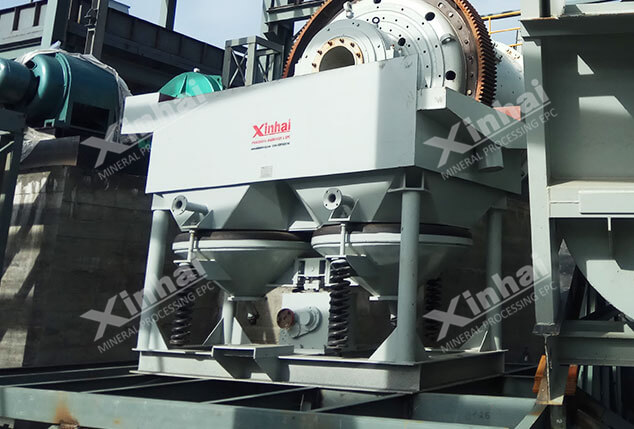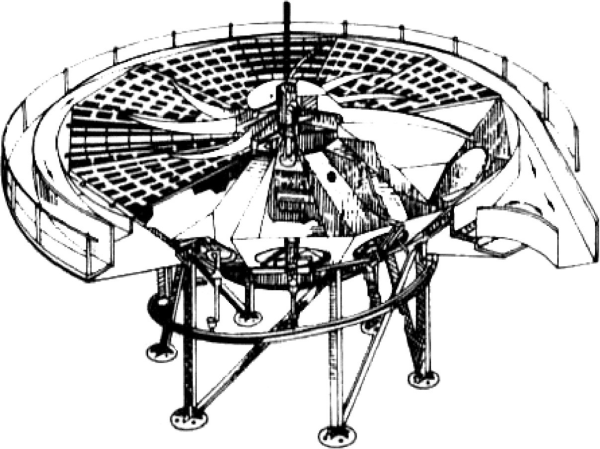Gravity separation is mainly used to treat ores with large density difference between gold minerals and gangue. It is a traditional beneficiation method for extracting gold from placer gold and extracting coarse gold and silver from vein ore. Gravity separation has the advantages of no reagent consumption, small environmental pollution, simple equipment structure, large processing capacity for coarse and medium-sized ores, and low energy consumption; Its disadvantages are small processing capacity for fine-grained ores and low separation efficiency. Therefore, gravity separation is often used in combination with flotation. Placer gold is directly recovered by gravity separation, while in vein gold mines, gravity separation is mainly used to recover medium and coarse-grained gold in advance to ensure the stability of recovery indicators.
The main equipment for recovering gold bearing ores by gravity separation method includes jigs, chutes, centrifugal concentrators, shakers, etc. This paper introduces the application of jigging machine in gold gravity separation process in detail.

Jigging machine is a gravity separation method to separate ore particle groups with different densities according to the density by means of the action of periodically changing vertical moving medium (water or air) flow. Jigging machine is more effective in treating medium and coarse-grained ores, with simple operation and large processing capacity, and is widely used in production. There are many types of jigs. At present, the main jigs used in gold mines are double chamber diaphragm jigs, trapezoidal jigs and circular jigs.
300mm × 450mm double chamber diaphragm jigger is reformed from Denver type jigger, commonly known as dianval jigger. This machine uses rotary water separating valve to intermittently add screen water. This kind of jigger is often used for cleaning operations on gold mining ships. In the pulse gold concentrator, this equipment is used to treat the ore discharged from the ball mill to recover the single medium and coarse-grained gold in advance. The upper limit of feeding particle size of this jigger is 12-18mm, and the processing capacity is 1-5t / h. The screen surface of the trapezoidal jigger is trapezoidal from the ore supply end to the ore discharge end. Its processing capacity is large, generally 15-30t / h, and the maximum feeding particle size can reach 10mm.

Circular jigs are mainly used on gold mining ships for rough separation. After one separation, 80% ~ 90% gangue can be discarded, and the gold recovery rate can reach more than 95%. The upper surface of the circular jig is circular, which can be considered as a combination of multiple trapezoidal jigs. The outline of the hydraulic circular jig (i.h.c-cleanland jig) with rotary rake is shown in Fig. 3-1. The sorting tank of this jigger is divided into several jigging chambers in a circular whole or radially. Each jigging chamber is independently provided with a diaphragm, which is pushed by the piston in the hydraulic cylinder. The number of jigging chambers is determined according to the equipment specification, with a minimum of 1 and a maximum of 12. The diameter of the equipment is 1.5-7.5m. The materials to be selected are fed from the center and move to the periphery. The high-density products are discharged under the screen, and the low-density products are discharged from the overflow weir above the periphery.

The prominent characteristics of the circular jigger are that the movement speed curve of the water flow is a square wave with rapid rise and slow decline, while the displacement curve of the water flow is a sawtooth wave (Fig. 3-2). This jigging cycle curve can well meet the requirements of processing wide grade materials, and can effectively recover fine particles. Even when processing - 25mm placer ore, it can be selected without classification and only needs to remove fine mud. The recovery rate of 0.1-0.15mm particle size fraction can be increased by about 15% compared with the general jig.